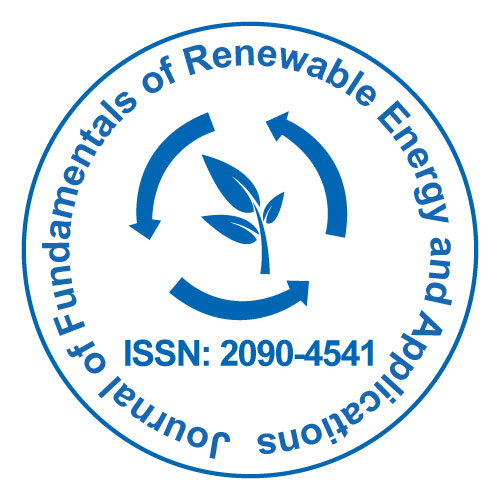
Journal of Fundamentals of Renewable Energy and Applications
Open Access
ISSN: 2090-4541

ISSN: 2090-4541
Sina Temesgen Tolera
Haramaya University, Ethiopia
Scientific Tracks Abstracts: J Fundam Renewable Energy Appl
Statement of the Problem: Statement of the Problem: Our environment is facing serious problems of high volumes of waste generation and inadequate disposal system in worldwide particularly in developing countries. There is also lack of studies on quantification of abattoir waste and lack of workers awareness towards abattoir waste. However, there is not been previously studied on this issues in eastern Ethiopia. Therefore, the purpose of the study was to estimate abattoir waste for bioenergy potential as sustainable management. Methodology: A cross-sectional study was conducted in four selected abattoirs of Eastern Ethiopia from January 1st, 2018 to December 30th, 2018. The magnitude of abattoir waste composition was computed based on Aniebo mathematical computational from the actual number of slaughtered livestock. Result: The study demonstrated that four selected abattoirs generate 1,606.403 ton of abattoir waste per year and using anaerobic digestion of about 85,139 m3/year of biogas and 111.25 ton/year of biofertilizer can be produced. The biogas or energy from the waste can replace firewood and charcoal and the expensive fossil fuels. Using Banks mathematical computation about 20,054.12 m3/year production of biogas could replace 20.56 ton/year of energy consumed by liquefied petroleum gas, kerosene, charcoal, furnace oil, petrol, and diesel in average. The current estimated biofertilizer (111.25 ton/year) from four abattoir sites can cover about 2,225 hectares/year with its advantage and efficiency of soil. When turned into cost, about $55,645 per year of price could estimate from biogas and biofertilizer. Conclusion & Significance: The study concluded that huge amount of biogas and dry biofertilizer yields could produce from abattoir waste through anaerobic digestion. Therefore, installing anaerobic digestion plant is recommended to ensure environmental safety and public health.
Sina Temesgen has his expertise in evaluation Waste management system and Occupational health and safety. His open and contextual evaluation model of waste management system is based on responsive constructivists creates new pathways for improving waste management system including abattoir waste. He has built this model after years of experience in research, evaluation, teaching and administration both in hospital and education institutions. The foundation is based on waste generation measurement (Aneibo, 2009) and other approaches which is a methodology that utilizes the previous generations of evaluation: measurement, description and judgment. These approaches are responsive to all researchers and has a different way of focusing.